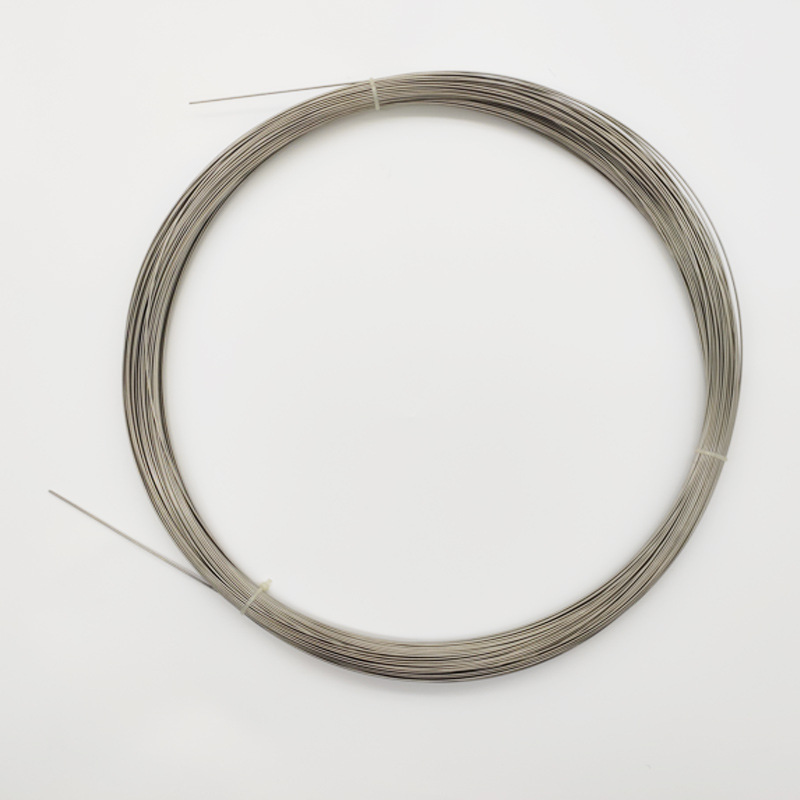Medical Guide Wire: A Key Role in Medical Devices
2023-07-10 17:47
Medical guidewire is a tool that plays a key role in medical devices to guide, deliver or otherwise operate to ensure the safety and effectiveness of medical processes. This article will introduce the types, working principles and application scenarios of medical guidewires in detail to help readers better understand and understand this important medical device.

First, the type of
medical guide wire Medical guide wire can be divided into a variety of types according to its use and characteristics. Common types include the following: Guide guidewire:
Guide guidewire is used to guide other medical devices to the target location, such as catheters, endoscopes, etc. Guide guidewires are generally thinner and more flexible to better pass through tortuous blood vessels or organs.
Conveying guidewires: Conveying guidewires are used to transport other medical devices to target locations, such as stents, balloons, etc. The conveying guidewire is usually thicker and more rigid in order to better push the medical device to the target location.
Functional guidewire: Functional guidewire is used to achieve certain functions, such as cutting, hemostasis, expansion, etc. Functional guidewires usually have specific functions and structures, such as blades, springs, etc.
Second, the working principle of medical guidewire The working principle
of medical guidewire is relatively simple, mainly by guiding or transporting other medical devices to achieve medical operations. Specifically, the working process of medical guidewire is as follows: Select the appropriate guidewire type:
According to the needs of medical operations, select the appropriate guidewire type, such as guide guidewire, conveying guide wire or functional guide wire.
Insertion of the guidewire: The guidewire is inserted into the target position by puncture or other means, such as blood vessels, organs, etc.
Guidance or delivery: Guide other medical devices to the target location through the guidewire, such as catheters, endoscopes, etc.
Operation: After reaching the target position, operations are carried out through the guidewire, such as releasing the scaffold, expanding the organ, etc.
Third, the application scenarios of medical guide wire The application scenarios
of medical guide wire are very extensive, involving the operation
of almost all medical devices. The following are some common application scenarios: Vascular interventional therapy:
In vascular interventional therapy, medical guidewires are often used to guide and deliver medical devices such as catheters and endoscopes to target locations, such as coronary arteries, cerebrovascular, etc.
Surgery: In surgery, medical guidewires are often used to guide and deliver various medical devices to target locations, such as laparoscope, thoracoscopy, etc.
Endoscopy: In endoscopy, medical guidewires are often used to guide and transport medical devices such as endoscopes and catheters to target locations, such as the digestive tract and respiratory tract.
Urinary system: In the urinary system, medical guidewires are often used to guide and deliver various medical devices to the target location, such as cystoscopy, ureteroscopy, etc.
In short, medical guidewires are a key role in medical devices, and their application scenarios are wide-ranging, involving almost all medical device operations. By understanding and recognizing the types, working principles and application scenarios of medical guidewires, various medical devices can be better understood and used, and the safety and effectiveness of medical operations can be improved. At the same time, it is also necessary to pay attention to safety and norms when using medical guidewires, comply with medical operating procedures, and ensure the safety and effectiveness of the medical process.
Related News
Contact Us
Telephone:86-0755-84264858
Mobile:13823613867 13418804292
Fax: 0755-84263124
Address: No. 22-1 Youganyuan Road, Anliang Community, Yuanshan Street, Longgang District, Shenzhen






